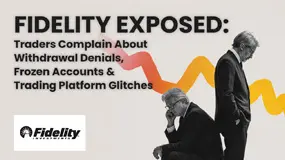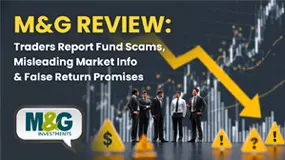简体中文
繁體中文
English
Pусский
日本語
ภาษาไทย
Tiếng Việt
Bahasa Indonesia
Español
हिन्दी
Filippiiniläinen
Français
Deutsch
Português
Türkçe
한국어
العربية
What Is Slippage in Forex Trading? How to Avoid It?
Abstract:The term slippage can be a common occurrence in forex trading and inevitably happens to every trader.

Perhaps you will often hear slippage when you are searching with the intention of joining a new forex broker, or trying out a new trading platform.
As you endeavour to be a consistent trader, it is essential to understand what is slippage and how to avoid slippage in forex trading. In this article, we will examine a little more in depth as to how forex slippage occurs, and how you can manage to avoid these situations.
What Is Slippage in Forex Trading?
Slippage occurs when a trade order is filled at a price that is different to the requested price. This most generally happens in fast moving, highly volatile markets which are susceptible to quick and unexpected turns in a specific trend like breaking news, Central Bank press releases, release of vital economic indicators and other geo-political events, such as elections and wars.
During these times, there are thousands of traders in the market, making the same decisions. They enter the market at the same price levels. With the disclosure of important data, prices move extremely fast, so much so that we see some price levels getting skipped on the charts altogether. Market orders remain pending and subsequently executed at the next price level. This gap is what creates slippage. Ask prices rise for long trades and bid prices might decline for short trades.
While there is no way to exactly know when slippage is going to occur, since it is often down to very small time windows where the prices change in less than a second, you can do your best to identify particularly common periods.
Slippage can either be positive or negative. A positive slippage occurs when an order is executed at a better price than expected. For instance, if you are buying the EUR/USD at 1.2001 but the order is executed at 1.2000, you have a price that is better by 1 pip. On the other hand, a negative slippage occurs when an order is executed at a worse price than expected. For instance, if you are buying the EUR/USD at 1.2000 but the order is filled at 1.2001, you have a price that is worse by 1 pip.
Which Currency Pairs Are the Least Prone to Slippage?
Under normal market conditions, the more liquid currency pairs will be less prone to slippage like the EUR/USD and USD/JPY. Although, when markets are volatile, like before and during an important data release, even these liquid currency pairs can be prone to slippage. News and data events can increase volatility drastically.
As an example, let's say you decide to open a long position on the AUD/USD currency pair – which can be highly volatile – after it was quoted at $0.7026. owever, in the time between submitting the order and the order being executed, the price might have increased to $0.7028. In this instance, you would have just experienced slippage, because you would be buying at a higher level than you had expected.
How to Avoid Slippage?
1. Trade low volatility and highly liquid markets
Trading in markets with low volatility and high liquidity can limit your exposure to slippage. This is because low volatility means that the price is less inclined to change quickly, and high liquidity means that there are a lot of active market participants to accommodate the other side of your trades.
One should also avoid trading or holding positions during times of low liquidity, such as overnight or weekends. This is because the prices of underlying assets may react to news or events that happened when the markets were closed.
2. Avoid Market Orders
Instead of market orders, limit orders are good for managing slippage. Unlike a market order, a limit order will never get executed at the worst price. But, remember that using limit orders might mean missing out on some lucrative positions. A market order will ensure your exits but will always entail risk of slippage. In some fast-moving market conditions, market orders are necessary. Nevertheless, try to get into limit and stop limit orders whenever possible.
3. Don't Trade Around Major Economic News Events
Major economic news events always heighten market volatility that causes slippage trading. Therefore it's beneficial to keep track of major events on the economic calendar in relation to the currency pair of your interest. Even though the economic news events may be tempting, the market volatility often hampers the execution of trade orders at quoted prices.
4. Use a Robust Trade Terminal
A good trade terminal is an important part of reducing network latency and ensuring that trades get executed with high speeds. Compromising on this aspect could be costly for a trader.
5. Choose a good forex broker
In addition to the above ways, choose a low slippage forex broker that also operates on faster execution speed platforms. The rapid speed would reduce order and execution time differences that lead to slippage.
List of Best Low Slippage Brokers
The impact of slippage may be minimized if you opt for an up-to-date system and a no dealing desk brokerage. Fast execution is the key and so all low slippage brokers adhere to it, making sure their platforms are very fast.
Conclusion
Although slippage in forex is reducing more and more with the increase in order execution speeds, it still does occur. Slippage is an unavoidable part of trading, it is something you need to account for in your trading plan. Slippage will figure into your final trading costs, alongside other costs such as spreads, fees, and commissions.
One way to do this is to look at the slippage you've experienced over the course of a month or longer and use the average slippage when computing your trading costs. This will give you a more accurate representation of how much you need to make to record a profit.
Almost all of the best forex broker choices you could make when you start trading try to negate the impact of slippage as much as possible. This can include adapting the methods they use to execute orders, or through special features that can manage to combat slippage.

Disclaimer:
The views in this article only represent the author's personal views, and do not constitute investment advice on this platform. This platform does not guarantee the accuracy, completeness and timeliness of the information in the article, and will not be liable for any loss caused by the use of or reliance on the information in the article.
Read more

Fidelity Exposed: Traders Complain About Withdrawal Denials, Frozen Accounts & Platform Glitches
Does Fidelity Investments prevent you from accessing funds despite numerous assurances on your requests? Do you witness an account freeze by the US-based forex broker every time you request withdrawal access? Do you struggle with an unstable trading platform here? Is the slow Fidelity customer service making you face forced liquidation? These issues haunt traders, with many of them voicing their frustration on several broker review platforms such as WikiFX. In this Fidelity review article, we have shared quite a few complaints for you to look at. Read on!

Exposing The Trading Pit: Traders Blame the Broker for Unfair Withdrawal Denials & Account Blocks
Did you receive contradictory emails from The Trading Pit, with one approving payout and another rejecting it, citing trading rule violations? Did you purchase multiple trading accounts but receive a payout on only one of them? Did The Trading Pit prop firm refund you for the remaining accounts without clear reasoning? Did you face account bans despite using limited margins and keeping investment risks to a minimum? These are some raging complaints found under The Trading Pit review. We will share some of these complaints in this article. Take a look.

M&G Review: Traders Report Fund Scams, Misleading Market Info & False Return Promises
Applying for multiple withdrawals at M&G Investments but not getting it into your bank account? Do you see the uncredited withdrawal funds out of your forex trading account on the M&G login? Does the customer support service fail to address this trading issue? Does the misleading market information provided on this forex broker’s trading platform make you lose all your invested capital? Were you lured into investing under the promise of guaranteed forex returns? These issues have become highly common for traders at M&G Investments. In this M&G review article, we have echoed investor sentiments through their complaint screenshots. Take a look!

INZO Broker MT5 Review 2025: A Trader's Guide to Features, Fees and Risks
INZO is a foreign exchange (Forex) and Contracts for Difference (CFD) brokerage company that started working in 2021. The company is registered in Saint Vincent and the Grenadines and regulated offshore. It focuses on serving clients around the world by giving them access to popular trading platforms, especially MetaTrader 5 (MT5) and cTrader. The company offers different types of trading instruments, from currency pairs to cryptocurrencies. It aims to help both new and experienced traders. Read on to know more about it.
WikiFX Broker
Latest News
2 Malaysians Arrested in $1 Million Gold Scam Impersonating Singapore Officials
Moomoo Singapore Opens Investor Boutiques to Strengthen Community
OmegaPro Review: Traders Flood Comment Sections with Withdrawal Denials & Scam Complaints
An Unbiased Review of INZO Broker for Indian Traders: What You Must Know
BotBro’s “30% Return” Scheme Raises New Red Flags Amid Ongoing Fraud Allegations
The 5%ers Review: Is it a Scam or Legit? Find Out from These Trader Comments
WikiEXPO Dubai 2025 Concludes Successfully — Shaping a Transparent, Innovative Future
Admirals Cancels UAE License as Part of Global Restructuring
Forex Expert Recruitment Event – Sharing Insights, Building Rewards
Exness Broker Expands in South Africa with Cape Town Hub
Currency Calculator



